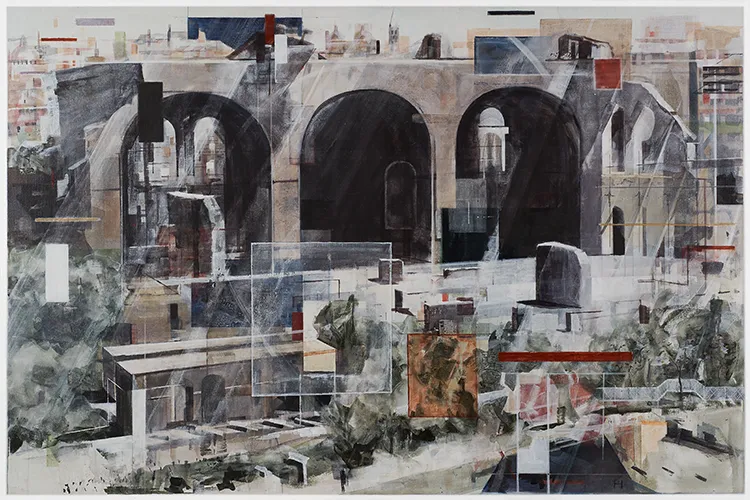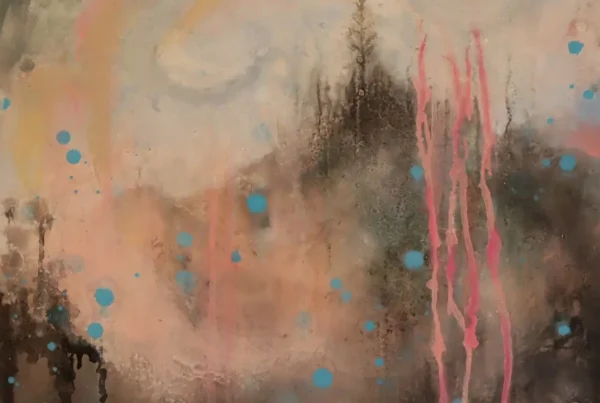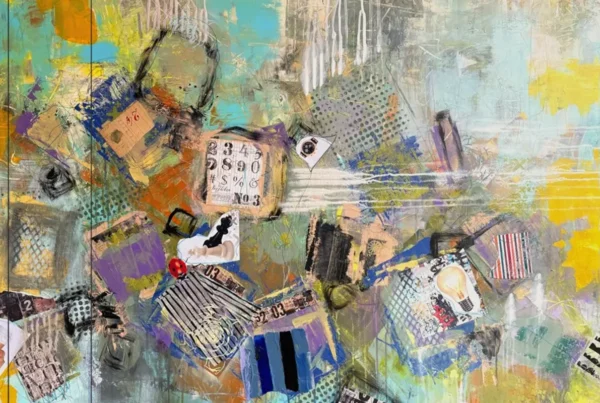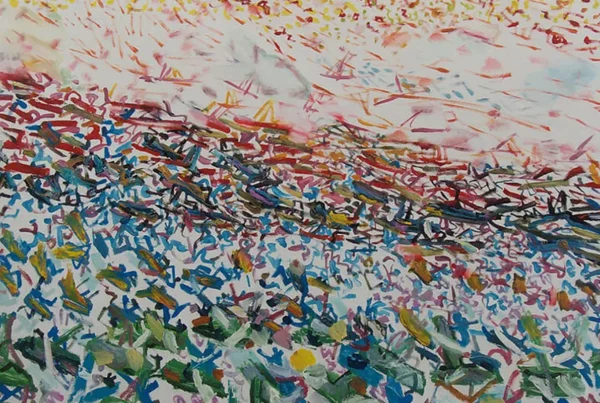“The paint has to have an independent role in giving shape to the expression of the work… Each stroke contains the mystery of painting and the materialized evidence of your existence.”
An Intellectual’s Journey to the Canvas
Wessel Huisman’s work is rooted in a profound intersection of historical inquiry and artistic expression, reflecting his deep-seated belief that art should stand independently, communicating through its own visual language. His path to becoming a painter was shaped as much by his academic pursuits as by his artistic aspirations. During his formative years, Huisman was captivated by the Renaissance ideal of the homo universalis, a philosophy that champions the cultivation of diverse talents and knowledge. This concept fueled his desire to understand society and human life within a broader temporal and spatial context. His passion for history led him to university studies, where he explored economic and social history, art history, sociology, and philosophy.
It wasn’t until after six years of academic immersion that his artistic inclinations became irresistible. Despite the academic demands, he pursued formal art education at the Academy of Fine Arts and Design in Arnhem, combining both studies for two years. His dual commitment paid off—Huisman graduated from both institutions, soon after being appointed as managing director at the academy, a prestigious acknowledgment of his artistic achievements. Over the course of 22 years, he balanced his administrative role with his growing artistic career until 2006, when he fully devoted himself to painting. His intellectual background continues to influence his work, offering a reflective depth that merges history, light, and human consciousness into every brushstroke.
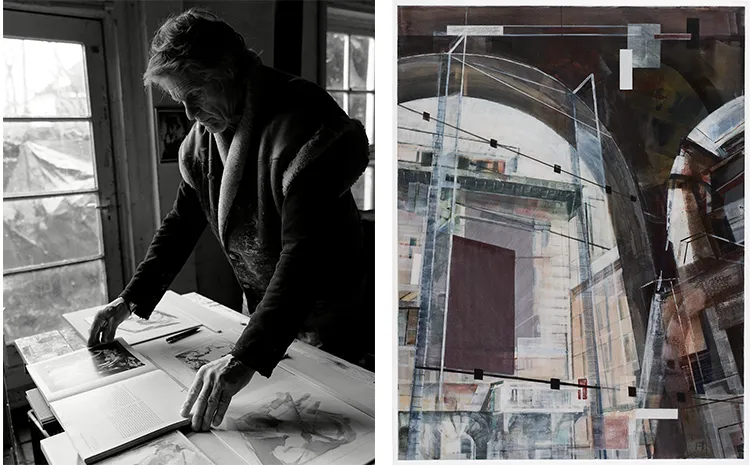
Wessel Huisman: Light as Memory and Metaphor
At the core of Huisman’s artistic identity is his fascination with light and space. For him, light transcends its physical qualities, serving as a vessel for memories and spiritual resonance. Huisman often refers to his lifelong “light archive,” a mental collection of vivid light moments stored since childhood. These memories, subconsciously gathered, now play a crucial role in his artistic process, becoming the foundation of his paintings. His engagement with light is akin to the sense of smell, evoking profound emotional connections that words fail to capture. In his work, subtle shifts in light correspond to human conditions, and his paintings often trigger similar reactions in his viewers, allowing them to access their own memories and inner worlds.
This treatment of brightness and contrast is particularly evident in his exploration of spatial dynamics. Through depictions of skylines, cityscapes, and architectural interiors, Huisman juxtaposes figurative and abstract elements. By blending these possibilities of expression, he creates a “generous” mental sensation which directly takes shape in the mind of the spectator. Stripes and squares in his compositions suggest windows or screens, further emphasizing movement, depth and rhythm. And so these elements are not just visual tools but are designed to provoke a spiritual response, immersing the viewer in a unique, introspective experience. It is in this dynamic interplay between light, space, and memory that Huisman’s artistic philosophy takes form.
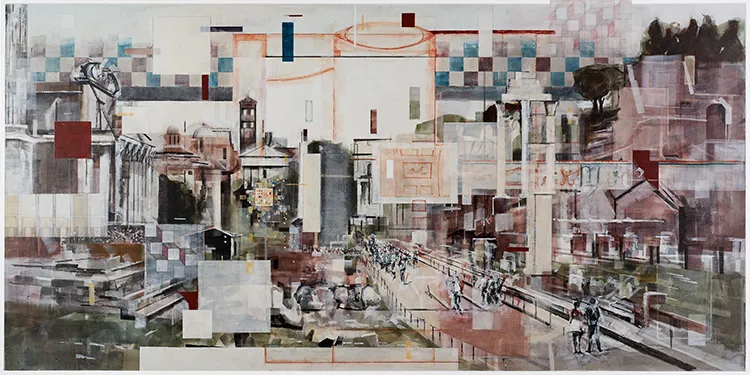
The Language of Painting: Beyond Historical Labels
Huisman resists the temptation to classify his work within specific art historical movements. Critics have attempted to label him as a neo-impressionist, cubist, or even a constructivist, but he dismisses these as superficial categorizations. Instead, he views his work as a continuation of painting’s ancient language, a medium that has been a vehicle for human expression since long before photography or conceptual art. In his view, painting remains a timeless method of capturing the human experience, transcending historical and cultural barriers. For Huisman, a painting is an independent entity—each brushstroke is both a mystery and evidence of the artist’s existence, with every detail contributing to the overall expression.
One of Huisman’s defining techniques is his use of photographs as a starting point. They provide compositional inspiration, particularly in terms of brightness and order. Over time, these photographs evolve into independent works, taking on their own identity. Huisman is adamant that his paintings should not carry overt messages or philosophical musings. Instead, every element in the painting speaks for itself, without the need for additional explanation. His goal is to maintain the purity of the visual experience, using the language of paint to evoke responses that go beyond intellectual analysis, delving into the viewer’s deeper mental landscape.
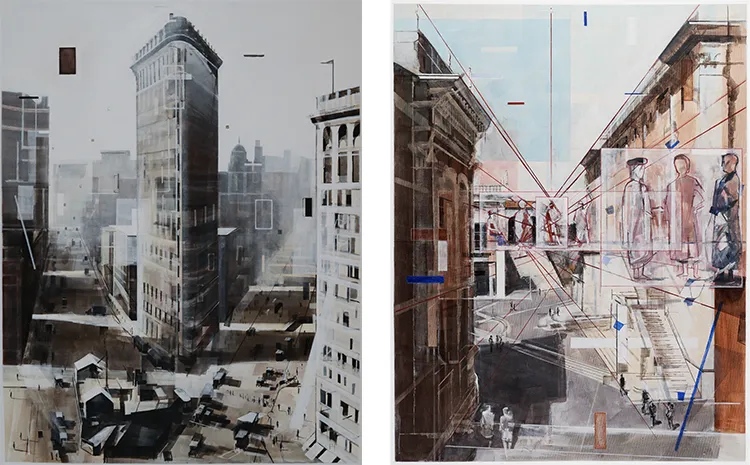
Wessel Huisman: The Generous Space
Huisman’s influences are as varied as his subject matter. Rather than pinpointing individual artists as his primary inspirations, he is drawn to a spatial quality he refers to as “The Generous Space.” This concept first struck him when he encountered life-sized Etruscan tomb paintings in Villa Giulia, Rome. He was captivated by their depth, clarity, and spatiality, which seemed to transcend the two-dimensional plane. This profound sense of space has since become a guiding principle in his work, as he seeks to create a depth that only emerges through the conscious intervention of the artist.
Huisman identifies similar spatial qualities in works from various eras and cultures. Whether in Renaissance paintings or the works of Johannes Vermeer, he discovers a mathematical precision that aligns with his own approach to painting. Notably, his study of Caravaggio’s work in the Contarelli Chapel inspired a triptych that reinterprets classical art through a contemporary lens. This reinterpretation is not about mimicking past masters but about researching their spatial and compositional insights into his own artistic language. This approach allows him to bridge the gap between historical conditions and consciousness and modern sensibilities, creating a timeless dialogue within his work.
Throughout his career, Huisman’s commitment to exploring light and space has remained unwavering. His paintings are not merely visual compositions; they are meditations on perception and time, designed to immerse the viewer in the present moment. By emphasizing light as both a physical and spiritual element, he fosters a deeper connection between the viewer and the artwork, transforming each painting into a profound experience. “What I represent, what I am capable of, has to be in my eyes, in my blood, in the way I move, fed by my connection to life. It must have the value of an undeniable fingerprint instead of a fashionable opinion or concept about life.”
